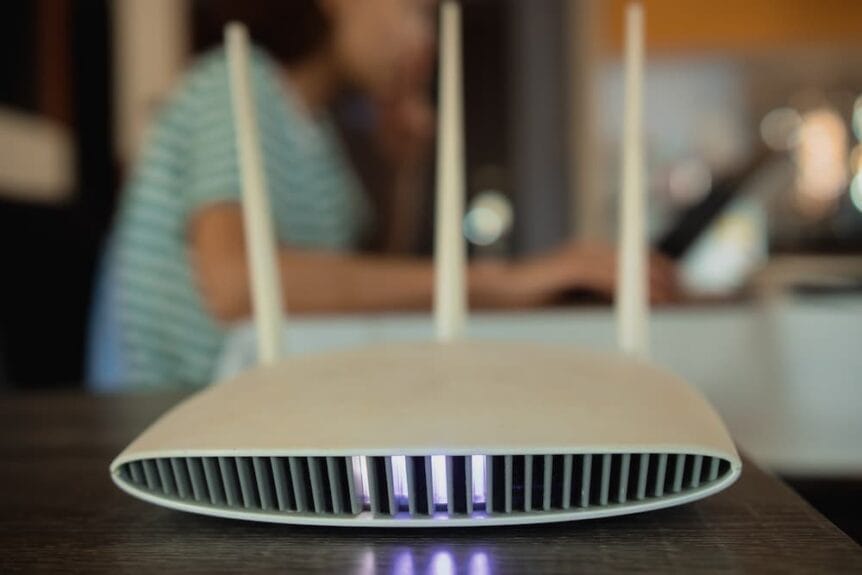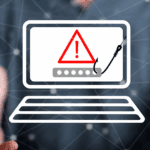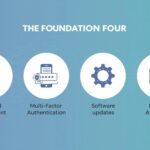Your employees are connecting to what they think is the hotel’s Wi-Fi network during a business conference. Within minutes, their login credentials, email communications, and access to your company’s internal systems could be in the hands of cybercriminals. This scenario happens more often than you might think, and it’s all thanks to a deceptively simple device called a Wi-Fi Pineapple.
Understanding Wi-Fi Pineapple Attacks
A Wi-Fi Pineapple is a compact wireless auditing device originally designed for legitimate network security testing by cybersecurity professionals. These devices, created by companies like Hak5, were intended to help IT teams identify vulnerabilities in their wireless networks through controlled penetration testing.
However, like many security tools, Wi-Fi Pineapples have found their way into the hands of malicious actors who use them for far different purposes. When used maliciously, these devices create convincing fake Wi-Fi networks that closely mimic legitimate ones, tricking unsuspecting users into connecting to a network controlled by attackers.
The connection between Wi-Fi Pineapples and broader cybersecurity threats runs deep. These devices serve as a gateway for various attack methods, including data theft, credential harvesting, and network infiltration. They represent just one tool in a cybercriminal’s arsenal, but their effectiveness and ease of use make them particularly dangerous for businesses.
How Wi-Fi Pineapple Attacks Work
The attack process begins when a cybercriminal sets up a Wi-Fi Pineapple in a target-rich environment. The device broadcasts a fake Service Set Identifier (SSID) that closely resembles a legitimate network name. For example, if the real hotel Wi-Fi is called “HotelGuest,” the fake network might appear as “HotelGuest_Free” or “Hotel-Guest.”
There are two primary attack methods: evil twin attacks and rogue access point attacks.
- Evil twin attacks specifically impersonate known Wi-Fi networks, exploiting your device’s tendency to automatically reconnect to previously used networks.
- Rogue access point attacks, on the other hand, simply advertise open networks with appealing names, hoping to attract users who are desperate for internet access.
Once your device connects to the fake network, the Wi-Fi Pineapple positions itself as a man-in-the-middle between your device and the internet. Every piece of data you send or receive passes through the attacker’s device, where it can be captured, analyzed, and potentially manipulated. This includes everything from your browsing habits to login credentials for business applications.
These attacks commonly occur in locations where people expect to find public Wi-Fi: coffee shops, airports, hotels, and conference centers. Attackers often choose busy locations where multiple legitimate networks exist, making it easier for their fake network to blend in without raising suspicion.
Why Businesses Are Prime Targets
Businesses represent high-value targets for Wi-Fi Pineapple attacks because of the sensitive data their employees regularly access. Unlike personal users who might only check social media or browse the web, business users often access email systems, cloud applications, financial platforms, and internal company resources while connected to Wi-Fi networks.
Employee devices serve as potential entry points into your corporate infrastructure. When an employee’s device is compromised through a Wi-Fi Pineapple attack, attackers may gain access to saved passwords, VPN configurations, and even cached data from business applications. This information can then be used to attempt lateral movement within your company’s network.
The compliance and regulatory implications add another layer of concern. If customer data, financial information, or other regulated data is accessed through a Wi-Fi Pineapple attack, your business could face significant penalties, legal liability, and damage to its reputation. Industries subject to regulations like HIPAA, PCI DSS, or GDPR face particularly severe consequences for data breaches.
Recognizing the Warning Signs
Identifying suspicious networks requires attention to detail and a healthy dose of skepticism. Look for duplicate network names with slight variations, networks with unusually strong signals in unexpected locations, or SSIDs that seem too generic or too good to be true. Networks named “FreeWiFi,” “Internet,” or similar generic terms should raise immediate red flags.
When connecting to any public Wi-Fi network, pay close attention to SSL certificate warnings and unexpected website redirects. If you suddenly see security warnings when visiting familiar websites, or if you’re redirected to login pages that look different from what you remember, disconnect immediately. These are classic signs that your traffic is being intercepted and potentially redirected through a malicious network.
Unusual device behavior can also indicate compromise. If your device suddenly runs slowly, displays unexpected pop-ups, or shows notifications about network connections you didn’t initiate, you may have connected to a malicious network. Battery drain that seems excessive or apps behaving strangely can also be warning signs.
Common Attack Scenarios
Coffee shops and coworking spaces present ideal environments for Wi-Fi Pineapple attacks. These locations typically have multiple networks, and patrons expect to see various Wi-Fi options. Attackers can easily set up shop with a laptop and a small device, blending in with other customers while their fake network captures data from unsuspecting victims.
Airports and hotels represent particularly lucrative targets because travelers are often anxious to get online and may be less cautious about which networks they join. Business travelers, in particular, may need to access work email or applications urgently, making them more likely to connect to the first available network without proper verification.
Conference centers and business meeting locations allow attackers to target specific industries or companies. By researching upcoming events, cybercriminals can position themselves to capture data from attendees who work for target organizations. Some attackers even create network names that reference the specific conference or company to increase their chances of success.
Internal network infiltration represents the most serious scenario. Attackers who successfully capture employee credentials through Wi-Fi Pineapple attacks may use those credentials to access your company’s internal systems remotely, potentially gaining access to sensitive data, intellectual property, or financial systems.
Data at Risk During These Attacks
Email credentials top the list of valuable information captured during Wi-Fi Pineapple attacks. Once attackers have access to an employee’s email account, they can monitor communications, send emails appearing to come from legitimate sources, and potentially access other systems through password reset functions.
Financial information represents another high-value target. Employees who access online banking, expense reporting systems, or financial applications while connected to compromised networks may unknowingly provide attackers with account numbers, transaction details, or authentication credentials.
Customer data and proprietary business information accessed through compromised connections can lead to significant compliance violations and competitive disadvantages. This might include customer lists, pricing information, strategic plans, or technical specifications that could be valuable to competitors or cybercriminals.
Login credentials for business applications and services create ongoing security risks. Attackers often collect these credentials and use them later to access systems directly, sometimes waiting weeks or months before attempting to use stolen information to avoid immediate detection.
Protection Strategies for Businesses
Strong Wi-Fi security policies form the foundation of protection against Wi-Fi Pineapple attacks. Your policy should clearly outline approved networks, prohibited connection practices, and procedures for reporting suspected security incidents. Employees need clear guidelines about when and how they can connect to public Wi-Fi networks while conducting business.
Employee education and awareness training programs are crucial because human behavior often represents the weakest link in your security chain. Regular training sessions should cover how to identify suspicious networks, the risks associated with public Wi-Fi use, and proper procedures for reporting potential security incidents. Make sure your training includes real-world examples and hands-on practice with identifying fake networks.
VPNs play a critical role in protecting remote and mobile workers. When properly configured, a VPN creates an encrypted tunnel between the employee’s device and your company’s network, making intercepted data unreadable to attackers. However, VPNs must be properly configured with kill switches that prevent data transmission if the VPN connection drops unexpectedly.
Network monitoring and intrusion detection systems help identify when attacks may be occurring. These systems can detect unusual connection patterns, unauthorized devices on your network, or suspicious data flows that might indicate a Wi-Fi Pineapple attack is in progress.
Securing Your Business Wi-Fi Infrastructure
Enterprise-grade Wi-Fi hardware provides security features that consumer-grade equipment lacks. Professional access points offer client isolation, advanced encryption options, and management capabilities that help prevent unauthorized access and monitor network activity. Brands like Ubiquiti’s UniFi line provide the robust security features businesses need.
WPA3 encryption represents the current gold standard for Wi-Fi security, offering stronger protection than older WPA2 protocols. If WPA3 isn’t available on your equipment, ensure you’re using WPA2-Enterprise with certificate-based authentication rather than simple password-based security.
Network segmentation and guest network isolation prevent potential attackers from moving laterally through your systems even if they gain initial access. Separate networks for employees, guests, and IoT devices limit the potential damage from any single compromise.
Regular security audits and rogue device detection help identify unauthorized access points that might have been installed on your network. Scheduled scans can reveal Wi-Fi Pineapples or other malicious devices that have been physically connected to your network infrastructure.
Employee Best Practices and Training
Guidelines for safe public Wi-Fi usage should emphasize verification before connection. Employees should always confirm network names with venue staff and avoid networks that seem suspicious or too convenient. When in doubt, using mobile data or a personal hotspot is safer than connecting to an unknown network.
Training employees to recognize and avoid suspicious networks requires ongoing education and practical examples. Show them how attackers create convincing fake networks and provide them with tools and techniques for identifying potential threats before connecting.
Proper VPN usage and configuration training ensures that employees understand how to use these tools effectively. This includes knowing when to activate the VPN, how to verify it’s working correctly, and what to do if the connection fails while they’re working with sensitive data.
Incident reporting procedures and protocols give employees a clear path for reporting suspected security incidents. Make sure they know who to contact, what information to provide, and what immediate steps to take if they suspect they’ve connected to a malicious network.
Advanced Security Measures
Multi-factor authentication implementation across business systems provides an additional layer of protection even if credentials are compromised through Wi-Fi Pineapple attacks. When properly implemented, MFA makes stolen usernames and passwords significantly less valuable to attackers.
Regular security assessments and penetration testing help identify vulnerabilities in your wireless infrastructure before attackers do. Professional security assessments can reveal weaknesses in your Wi-Fi setup, employee practices, or security policies that might make your business vulnerable to these attacks.
IoT device security and network segregation deserve special attention because these devices often have weak security and can serve as entry points for attackers. Separate IoT devices onto isolated network segments and regularly update their firmware to address known vulnerabilities.
Backup and disaster recovery planning for security incidents ensures your business can continue operating even if a Wi-Fi Pineapple attack succeeds. Regular backups, tested recovery procedures, and incident response plans minimize the impact of successful attacks on your operations.
Building a Comprehensive Security Strategy
Integration with existing cybersecurity frameworks ensures that Wi-Fi security measures complement your broader security strategy. Whether you follow NIST, ISO 27001, or other frameworks, Wi-Fi security policies should align with your overall approach to risk management and security controls.
Regular policy updates and security awareness campaigns keep your defenses current as attack methods evolve. Cybercriminals constantly develop new techniques, so your policies and training programs must evolve accordingly to address emerging threats.
Vendor management and third-party security considerations extend your security requirements to partners and suppliers who may access your systems. Ensure that contractors and partners follow similar Wi-Fi security practices when working with your data or systems.
Compliance requirements and industry-specific regulations may dictate specific security measures for Wi-Fi networks. Healthcare organizations, financial institutions, and other regulated industries often have additional requirements for protecting data transmitted over wireless networks.
When to Seek Professional Help
Signs that your business needs expert cybersecurity assistance include repeated security incidents, lack of internal expertise to implement proper controls, or complexity in your IT environment that exceeds your team’s capabilities. If you’re unsure about your current security posture, professional assessment can provide valuable insights.
Benefits of working with managed security service providers include access to specialized expertise, 24/7 monitoring capabilities, and cost-effective access to enterprise-grade security tools. MSPs can provide the depth of knowledge and round-the-clock attention that many businesses cannot maintain internally.
Cost considerations and ROI of professional security services often favor outsourcing, especially for smaller businesses. The cost of a security breach typically far exceeds the investment in professional security services, making proactive protection a sound business decision.
Ongoing monitoring and incident response capabilities ensure that your business can detect and respond to threats quickly. Professional security providers offer the tools and expertise needed to identify Wi-Fi Pineapple attacks and other threats as they occur, minimizing potential damage to your business.
Wi-Fi Pineapple attacks represent a real and growing threat to businesses of all sizes. The combination of easily available tools, high-value targets, and human vulnerability creates a perfect storm for cybercriminals. However, with proper awareness, training, and security measures, you can significantly reduce your risk and protect your business from these sophisticated but preventable attacks.





